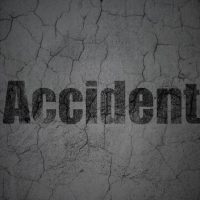Who Is Responsible When a Bridge Comes Tumbling Down

When tragedy strikes, one’s first response is typically to attend to the injured or, in some circumstances, to settle the estate of the deceased. At some point, however, attention begins to turn to blame, and, as costs begin to mount, how to hold those accountable for the tragedy can lead to a personal injury lawsuit. This is especially the case where one is truly an innocent bystander, and the tragedy merely befell him/her. Unfortunately, this was the situation recently near the campus of Florida International University, where a 950-ton concrete slab fell onto a street, immediately killing six people, and injuring others (a seventh person later passed away due to sustained injuries). As the investigation into the cause of this collapse continues, the victims and their families must pick up the pieces, and begin to hold all responsible parties accountable. A discussion of what a plaintiff must prove in a negligence case causing catastrophic damage will follow below.
Negligence Generally
In cases such as the FIU bridge, negligence is the primary legal theory in which the responsible parties can be held liable. Generally speaking, negligence holds that the parties involved in an accident had a duty to properly build and maintain the bridge that would not injure the public, and that one of these parties breached that duty. Thus, in order to win a negligence case, the injured person, the plaintiff, must prove the following four elements:
- Duty – The defendant owed a legal duty to the plaintiff under the circumstances;
- Breach – The defendant breached that duty by acting or failing to act in a certain way;
- Causation – It was the defendant’s actions (or inaction) that, in fact, caused the plaintiff’s injury; and
- Damages – The plaintiff was harmed or injured as a result of the defendant’s actions.
Liability
As mentioned above, the investigation into the cause of the collapse is still ongoing. This is critical, as the touchstone for any negligence case focuses on who breached their duty. The possibilities in this case include the following:
- The engineering company;
- The contractor and/or any subcontractors;
- The concrete supplier;
- Ancillary material suppliers (steel/rebar supplier, for example);
- The government entity (i.e., the permit department) who approved the plans;
- Florida International University; and
- Any other person or entity who provided any contribution to the design, manufacture, or supplies of the bridge.
Depending on how the investigation goes, the injured parties (or their estates) can file a negligence claim against any or all of the entities determined to be liable.
While the injured parties do not participate in the determination of liability, the National Information Safety Board will conduct a thorough examination of each recovered portion of the bridge, as well as to look at the plan in excruciating detail, in an effort to determine liability. This process will take time, which will not be welcome news to the injured parties. However, the injured parties should take this time to obtain the services of an experienced property injury attorney, so that, by the time the determination of liability has been concluded, the attorney will have a plan of action to utilize all means at their disposal to fight for their clients.
Get Legal Advice
No one should ever have to suffer from a catastrophic injury, or even death, where another party is at fault. If you or a loved one were injured at the hands of someone else, contact the Miami law firm of Pita Weber Del Prado. We will use our years of experience to fight on you or your loved one’s behalf to get you the money you need and deserve. Contact us for a free consultation.
Resource:
miamiherald.com/news/local/community/miami-dade/article205939504.html



